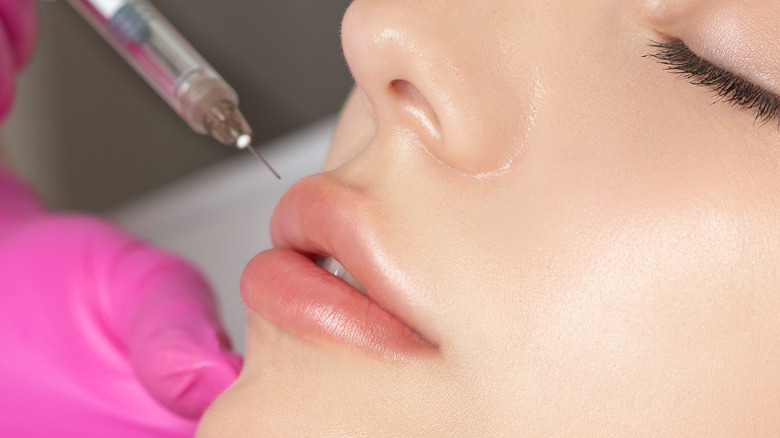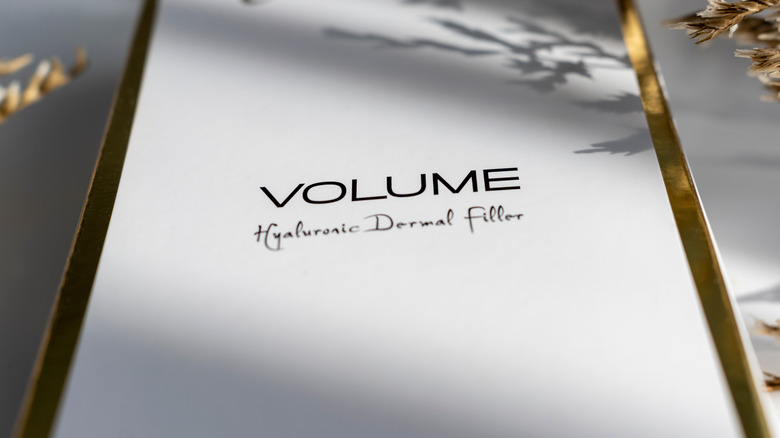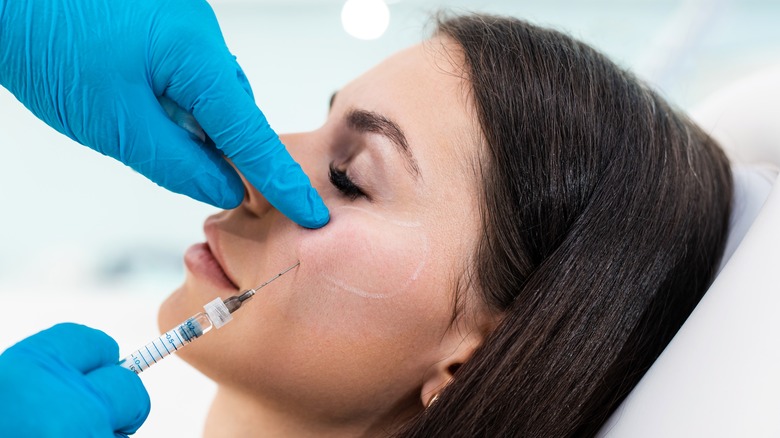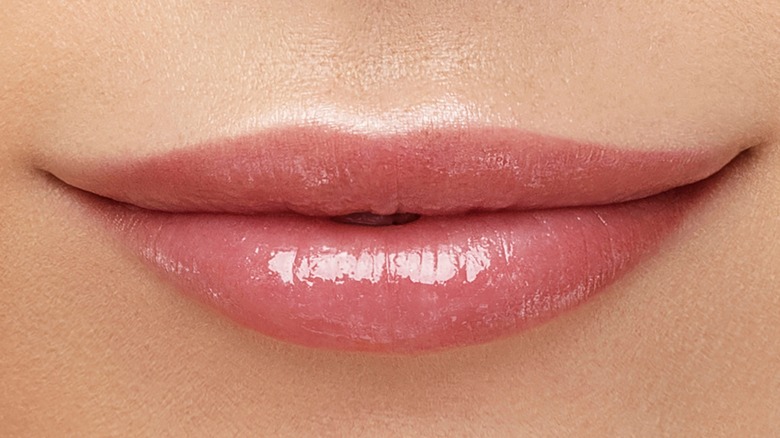Princess Lip Filler: What You Should Know About The Procedure (& How Long It Lasts)
Lip filler has soared in popularity since Kylie Jenner announced she'd undergone the procedure in 2015. Demand has soared by a whopping 60 percent since 2000, per the Archives of Plastic Surgery Journal. The popular treatment uses hyaluronic acid to enhance the lips, giving them a plumper look. However, each product varies slightly and is used to achieve different results. Naturally, as demand has increased, the range of products on the market has also increased. Now, clients are often presented with a variety of fillers to meet their needs, including Juvederm, Restylane, and Perlane, to name a few.
While these tend to be the most common, other options are also available. In 2009, a product known as Princess filler entered the market and has since been used for various skin concerns worldwide. If you've never heard of Princess filler before, you have now. However, what else is there to know about this particular product?
Princess filler is safe and sterile
Like many other fillers, Princess filler fills out wrinkles and gives lips a volumized, plumper appearance. However, Princess filler has unique qualities. It is manufactured using what is known as "SMART" technology, which, according to Consulting Room, increases the product's longevity. It works to create an incredibly "strong and stable" gel (via Aesthetic Pharma) that is both smooth and highly elastic, making it a top choice for filler administers, as it allows for more control and precision. The SMART technology also ensures that the product is safe and sterile, which in turn, reduces the risk of side effects.
Additionally, the filler was awarded an official CE mark in 2016, indicating that the product and manufacturer meet health, safety, and environmental protection standards in the EU. This also lets the consumer know that a product has met the same standards. Consequently, you can rest assured that Princess filler is safe and meets the regulations required.
It can treat a variety of areas
Doctors, surgeons, and dermatologists use Princess filler to treat a wide range of patient concerns, with studies finding that it is most effective at treating "facial lipoatrophy, morphological asymmetry, debilitating scars, and NLFs" over six months (via the Clinical, Cosmetic and Investigational Dermatology Journal). However, it can also be used as a lip filler to highlight your cupid's bow; as a neck filler to improve facial contours, or to improve the appearance of wrinkles on the body. Like many other fillers, Princess filler will help you achieve a natural, plumper look.
Because of the combination of hyaluronic acid and lidocaine, many claim Princess filler is relatively painless. One study supports this idea, revealing that those who do end up with mild pain find that it subsides after approximately 15 minutes. However, getting under-eye filler may be more painful, which is something to consider. So if you are interested in this filler specifically, you can rest assured that you are using a high-quality product that shouldn't give you severe pain.
Princess filler lasts from six to nine months
Now it's time for the most important question. How long does Princess filler last? Generally speaking, Princess filler should last anywhere from six to nine months, similar to many other fillers currently on the market.
However, this also depends on the individual, as some people break down the filler faster than others. This process all boils down to an individual's metabolism. Therefore, if you have a fast metabolism, your results may not last as long as someone who has a slower metabolism. As a result, you will need to get your filler topped off more regularly.
Of course, like with any filler, it should only be administered by someone who is adequately qualified to do the job. You should look for qualified board-certified dermatologists and plastic surgeons and avoid beauty therapists who are not authorized to use Princess filler. If a beauty therapist tries to offer you this filler, it is important to note that they should not be doing so.



